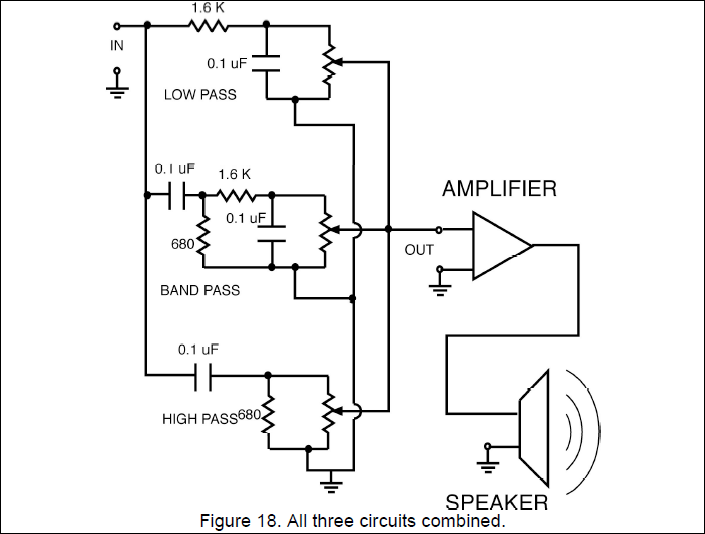Hi
I was reading today about building a simple Equalizer circuit, and found this wonderful and simple PDF:
www2.ece.ohio-state.edu/~anderson/Outreachfiles/AudioEqualizer.pdf
They explain there about Low-Pass Filter, High-Pass Filter, and a combination of the two - Band-Pass Filter.
The result circuit that was built there, which is a simple 3-Band Equalizer, looks like this:

So far everything is OK.
As can be seen, this circuit is made of Resistors and Capacitors.
Now, sometime ago a person told me, that to build a Low-Pass/High-Pass filter, I need to use Capacitors and Inductors.
He told me to google "Crossover", in order to see the circuit,
and indeed the circuit for CrossOver is LC and not RC...
For example:

http://www.diyaudioandvideo.com/Tutorial/DesignBuildCrossover/
As can be seen, the circuits here are completely made of Capacitors and Inductors, and no Resistors..
So my question:
For building a simple equalizer,
which of the 2 ways is better:
The first (RC),
or the second (LC, like the Crossover example)?
Thank you
I was reading today about building a simple Equalizer circuit, and found this wonderful and simple PDF:
www2.ece.ohio-state.edu/~anderson/Outreachfiles/AudioEqualizer.pdf
They explain there about Low-Pass Filter, High-Pass Filter, and a combination of the two - Band-Pass Filter.
The result circuit that was built there, which is a simple 3-Band Equalizer, looks like this:

So far everything is OK.
As can be seen, this circuit is made of Resistors and Capacitors.
Now, sometime ago a person told me, that to build a Low-Pass/High-Pass filter, I need to use Capacitors and Inductors.
He told me to google "Crossover", in order to see the circuit,
and indeed the circuit for CrossOver is LC and not RC...
For example:

http://www.diyaudioandvideo.com/Tutorial/DesignBuildCrossover/
As can be seen, the circuits here are completely made of Capacitors and Inductors, and no Resistors..
So my question:
For building a simple equalizer,
which of the 2 ways is better:
The first (RC),
or the second (LC, like the Crossover example)?
Thank you










